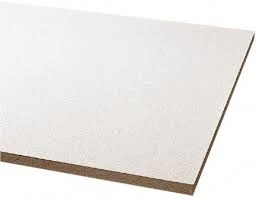8 月 . 15, 2024 04:39 Back to list
Essential Guide to Choosing the Right HVAC Ceiling Access Panel for Your Space
The Importance of HVAC Ceiling Access Panels in Modern Buildings
In modern buildings, the efficient operation of heating, ventilation, and air conditioning (HVAC) systems is crucial for maintaining comfortable indoor environments. One often overlooked component that significantly contributes to the effectiveness of these systems is the ceiling access panel. These panels provide a means of accessing HVAC equipment, ductwork, and other essential systems hidden within the ceiling, ensuring they can be maintained and serviced effectively.
What are HVAC Ceiling Access Panels?
HVAC ceiling access panels are typically installed in the ceilings of residential and commercial buildings to offer access to critical infrastructure such as ductwork, ventilation systems, and electrical components. Made from various materials, including metal, plastic, or drywall, these panels are designed to seamlessly blend into the ceiling while providing easy access when necessary.
Purpose and Benefits
1. Ease of Maintenance One of the primary purposes of access panels is to allow maintenance workers to reach HVAC equipment without causing damage to the ceiling or walls. Regular maintenance is essential to keep HVAC systems running efficiently, preventing costly breakdowns and extending the lifespan of the equipment. Access panels can be opened quickly, allowing technicians to inspect, clean, or replace parts with minimal disruption.
2. Energy Efficiency A well-maintained HVAC system operates more efficiently, leading to reduced energy consumption and lower utility bills. Access panels facilitate easier inspections and routine maintenance, helping to identify and rectify issues like leaks or poor airflow, which can contribute to energy waste. By ensuring systems are running optimally, building owners can achieve significant cost savings over time.
hvac ceiling access panel

3. Aesthetic Integration Modern access panels are designed to blend into various ceiling types and decor styles. They can be painted or finished to match surrounding surfaces, minimizing their visual impact. This is particularly important in commercial settings where appearance matters, such as offices, restaurants, and retail spaces. Concealed access points maintain the aesthetic integrity of a space while providing the necessary functionality.
Installation Considerations
When installing HVAC ceiling access panels, several factors should be taken into account. Firstly, the size and location of the panel should be carefully planned to ensure that it provides convenient access to the HVAC system without disrupting the overall layout. The panel should also comply with local building codes and regulations to ensure safety and functionality.
Additionally, the choice of material is critical. Panels should be selected based on their durability, resistance to moisture, and ability to withstand the conditions of the space in which they are installed. For instance, bathrooms or kitchens may require panels that can resist humid conditions.
Conclusion
HVAC ceiling access panels play a vital role in the performance and maintenance of heating, ventilation, and air conditioning systems in buildings. By providing easy access for inspections and repairs, these panels contribute to the overall efficiency of HVAC systems, enhance energy savings, and maintain the visual appeal of the interiors. For building owners and facility managers, investing in high-quality access panels is not only a practical decision but also one that pays off in the long run through improved system performance and reduced operational costs. As technology continues to advance, the design and functionality of these panels will likely evolve, further enhancing their importance in modern building infrastructure.
-
Revolutionizing Interior Design with Ceilings t grid Suspended SystemNewsOct.29,2024
-
Revolutionizing Ceiling Design with ceiling access panel with Gypsum Tile WaterproofNewsOct.29,2024
-
Revolutionizing Interior Design with PVC Gypsum Ceiling: A Comprehensive GuideNewsOct.29,2024
-
Elevating Interior Design with High quality Mineral Fiber Ceiling TilesNewsOct.29,2024
-
Revolutionizing Interior Design with PVC Gypsum Ceiling: A Comprehensive GuideNewsOct.29,2024
-
Elevating Interior Design with High-Quality Mineral Fiber Ceiling Tiles: A Comprehensive GuideNewsOct.29,2024







